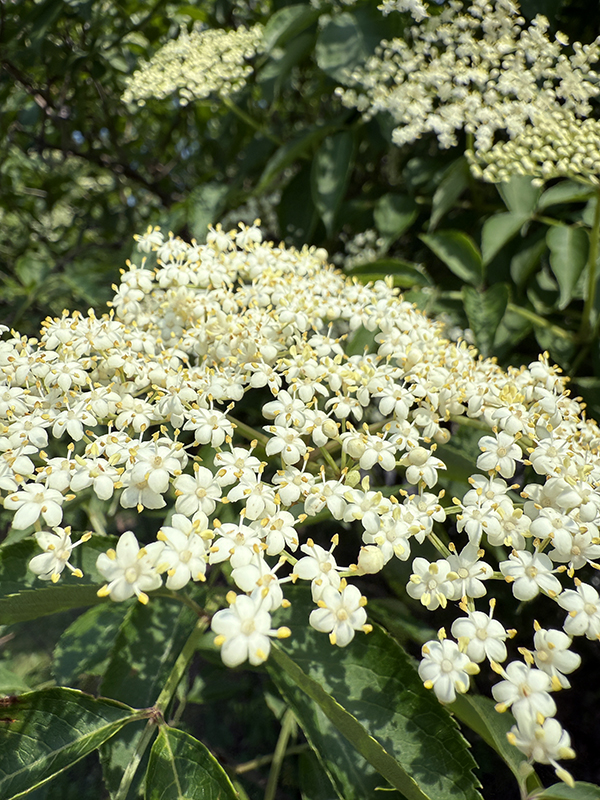
June 12, 2025| Education, Environment
By: Laurie Kane
Our native plant gardens feature over 50 varieties of buzzworthy blooms, many of which are currently beginning to flower with the return of warm weather. One of these is the American elderberry (Sambucus canadensis), also known as common elderberry, which produces sprays of small, fragrant white flowers in June and July. These blooms, a source of nectar for butterflies and other pollinators, are followed in late summer by clusters of small, dark-colored berries that are eaten by many songbirds and mammals. Though not a preferred food, deer may browse the leaves, twigs, and fruit if hungry enough.
.jpg) |
.jpg) |
American elderberry can grow up to 12 feet tall and will spread over time, though not aggressively. This native shrub tolerates erosion and wet soil and thrives in full sun to partial shade. Planting two or more elderberry shrubs encourages cross-pollination, which can lead to greater fruit production.
Native Americans ate various parts of this shrub and used it for assorted medicinal purposes. Elderberry preserves, syrups, tea, and wine are still popular today. Dried elderberry stems can be hollowed out to make a flute or whistle, as referenced by the plant’s botanical name, Sambucus, which is derived from a Greek word meaning musical instrument.
We invite you to visit our native plant gardens at 125 Landing Road, Landing, NJ, to see these buzzworthy blooms. We hope you will be inspired to incorporate native plants into your yard or garden, supporting local wildlife and contributing to a healthier environment!